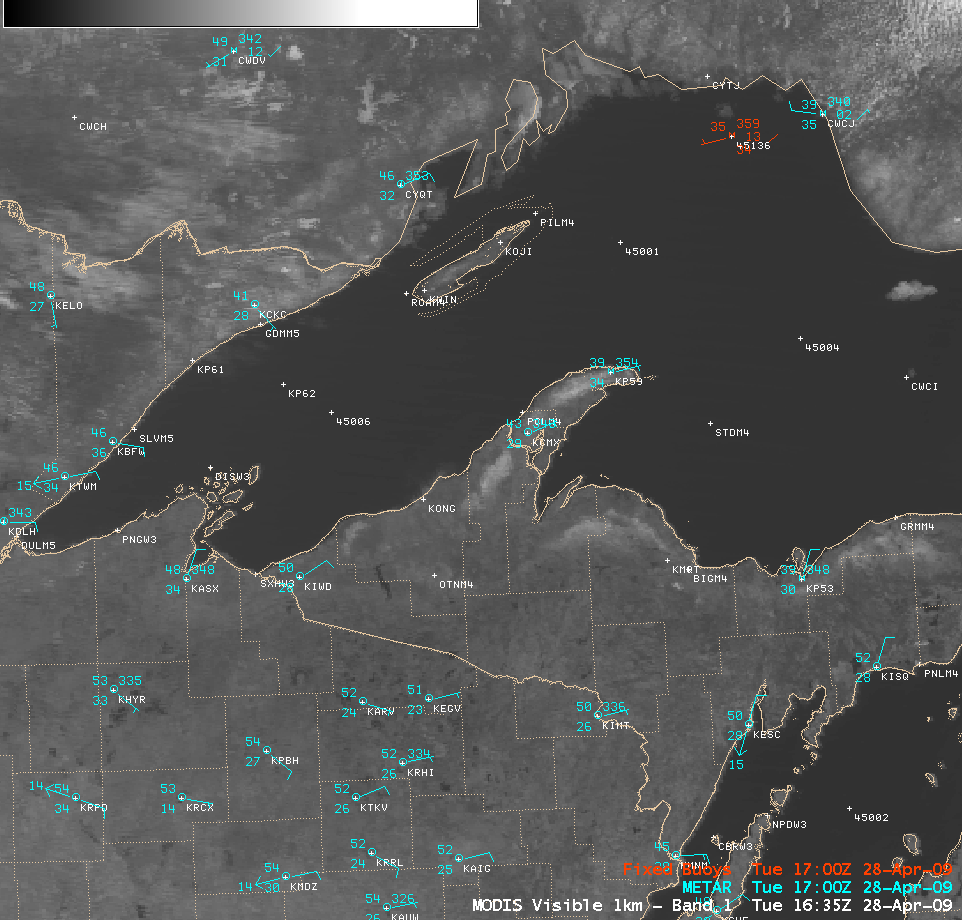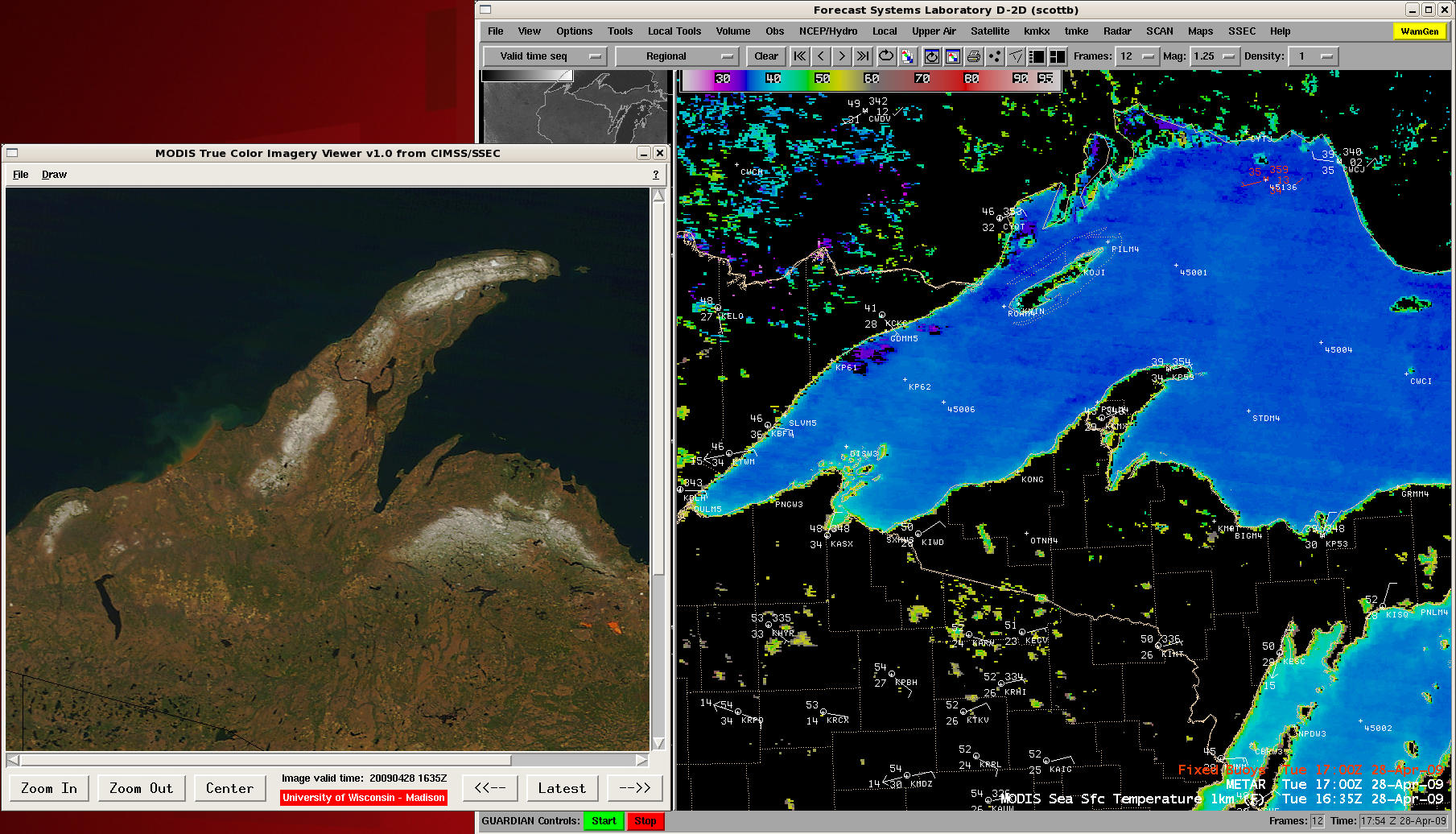Lingering snow cover in the Upper Peninsula of Michigan
A late-season winter storm dumped as much as 29.0 inches of snow across parts of the Upper Peninsula of Michigan during the 19-21 April 2009 period — in fact, the 20.5 inches that fell at Marquette was their 3rd largest late season 2-day snowfall on record. AWIPS images of the MODIS visible channel, 11.0 µm IR window channel, and the Land Surface Temperature (LST) product (above) showed that a few areas of snow cover still remained on 28 April 2009. MODIS IR brightness temperatures were as cold as +2º to +5º C (darker blue colors) over the patches of snow cover, which still appeared as varying shades of white on the visible image. While there were some MODIS Land Surface Temperature values as cold as the middle 40s F (darker green colors) over the patches of snow cover, the coldest areas showed up as black “NO DATA” pixels in the LST product, due to the product algorithm mistakenly identifying the sharp temperature gradients as cloud features.
Unfortunately, there were no National Weather Service Cooperative Observer locations in the region that reported any snow depth on the morning of 28 April, so the true depth of the remaining snow cover was not known — however, according to an email reply from meteorologist John Dee (who lives on the Keweenaw Peninsula):
The snow that remains is from the season and is quite variable in depth, with shaded areas in the higher terrain still having a foot or a bit more, but unshaded areas being bare and those that catch some sun and some shade having anywhere in between zero and a foot. I’d say probably 2-6″ still remaining if you took the bare with the other areas with varying depth and averaged things out.
AWIPS examples of a 250-meter resolution MODIS true color image and a 1-kilometer resolution MODIS Sea Surface Temperature (SST) product (below) showed two items of interest: (1) there was a good signal of the runoff of snow-melt water as it flowed northward from the Ontonagon River basin into Lake Superior (note the reddish hue of the water immediately offshore, due to the iron-rich sediment), and (2) the water temperatures in Lake Superior were still quite cold, with MODIS SST values generally in the 35º to 38º F range (darker blue colors).



